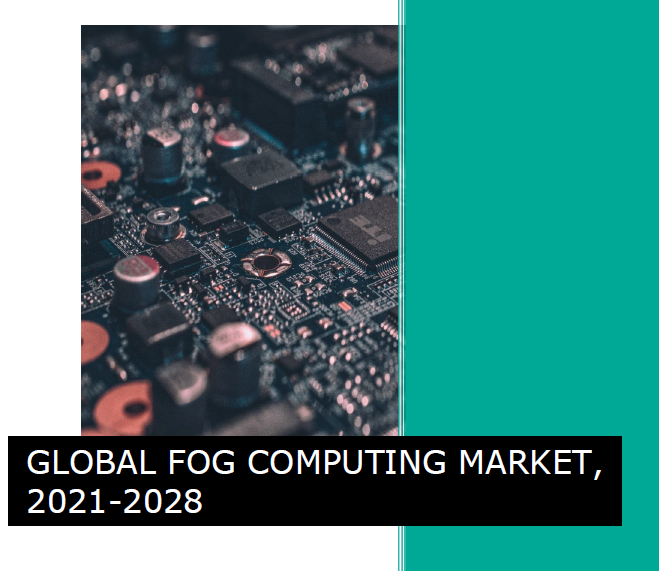Introducing Single Price Syndicate Report

GLOBAL FOG COMPUTING MARKET
MARKET ANALYSIS & SEGMENT FORECAST FROM 2021 TO 2028Global Fog Computing Market Size, Share & Trends Analysis Report By Type (Hardware- Switches, Routers, Gateways, Controller and Software- Fog Computing Platform, Customized application Software), By Application (Smart Manufacturing, Smart Building and Home automation, Smart Energy, Security and Emergencies, Healthcare, Transportation and Logistics, and Others), By Region (North America, Europe, Asia-Pacific, South America, and Middle East & Africa) And Segment Forecasts, 2021 - 2028
Published Date: TBD
Base Year for Estimate: 2020
Report ID: KYMGLIT05
Format: Electronic (PDF)
Number of Pages: TBD
Price: USD 5000
Market Outlook
Market Size & Forecast (2021-2028)
Segment Analysis (2021-2028)
Market Drivers & Restraints
COVID-19 Impact Analysis
Competitive Landscape & Company Profiles
KOL Commentary (Primary Research)
Session With Analyst
The industry is undergoing a shift that allows automation and data sharing in manufacturing technologies and processes. This transformation is referred to as industry 4.0 fog computing architecture, which can provide real-time processing, nearby storage, ultra-low latency, reliability, and high data rate.
The Internet of Things (IoT) is generating a massive amount and variety of data that has never been seen before by the time the data reaches to cloud for data analysis the chance to act on it may have passed. So, the new approach for understanding, analyzing, and acting on data from the internet of things is known as fog computing.
Fog computing is also known as fog networking. It is a decentralized computing infrastructure that is used to improve cloud computing efficiency and data processing capabilities. It can decentralize the computing resources needed for processing in the most efficient way possible.
In fog computing, computation, and knowledge storage is spread between the data source and the cloud most reasonably and efficiently possible. It happens because, the Internet of Thing, a cloud-related technology produces a massive amount of data, which eventually find its way to the cloud for analysis. Rather than transmitting massive volumes of data to the cloud for future, historical analysis and storage, fog computing helps to uncover flaws by examining the most time-sensitive data at the network edge, on the outskirts of its creation source.
Fog computing aids in the integration of both process and intelligence at the data level, hence, resolving the problem and assisting in decision making while only transferring the useful and valuable data to the cloud which can be used in real-time and solve many business problems. Building and household automation, smart energy, connected health, transportation and logistics, security, and emergence systems are just a few of the applications that get benefit from fog computing.
Market Growth Factors:
- Connected vehicle: Various valuable attributes are dependent on fog and internet access that are applied to vehicles, as fog work on a real-time basis and acts on data in milliseconds. Such as, automated transmission and hand-free operation or a vehicle that can park itself or self-driving mode. Eliminating the need for a human to do so. Vehicle communication has been designed as part of the intelligent transportation system to promote safety and efficiency through intelligent transportation by using a range of data.
- Augmented Reality: Augmented reality technologies are extremely sensitive to delays; even a slight delay can result in substantial user interface issues. As a result, fog computing-based technologies have enormous promise in this field. Fog and cloud infrastructure was used to improve the interaction game for brain computers.
- Smart HealthCare: Nowadays, people are focusing more on their health, and also the government is proving huge investments to build their countries health care sector. As a result of pollution, our surroundings are infested with a variety of germs and viruses that cause a variety of ailments. Smart healthcare comprises smart IoT, which is capable of observing patients' actions and keeping track of various bodily parameters, and uploading the data to fog nodes, which are subsequently noticed by medical personnel for relevant measures to be taken. Based on this, the doctors advise the patients on the best course of action.
- Smart Waste Management: The environment is becoming increasingly polluted daily. Natural resources must be prioritized to rescue the planet. Rising waste and water loss from the ground must be taken into account. One of the alternatives for environmental improvement that could be considered is smart garbage management.
Market Drivers and restraints:
Drivers:
- The Development of 5G technologies: Fog computing data architecture progressed with minimal latency concerns and smooth bandwidth functioning and grown as 5G technology. Furthermore, the progression of the Internet of Things (IoT) to the Internet of Everything (IoE) necessitates high-speed data analytics and faster response times, which is a key driver for the fog computing industry.
- Bandwidth Saving: Fog computing allows data to be processed according to the needs of the application, as well as the available networking and computing resources. This decreases the quantity of data that must be transmitted to the cloud, conserving network bandwidth in the process. Fog computing helps in bandwidth saving without deducing any information. Fog nodes in their technique may detect and remove repeated data. By removing duplicate data, fog aids in data reduction. Without affecting original data/information, fog computing detects duplicate data and eliminates the duplicated data.
- Industry 4.0: Industry 4.0 mainly focuses on the manufacturing industry. It enables the suppliers and manufacturers to take benefit of the technology and the advent of the new technological concept to obtain and provide with a new and improved product or service by the manufacturer with a variety of customization, lower cost, and higher productivity. This happens due to innovation in cycles and data exchange between systems. The manufacturing and production processes generate a considerable amount of data, which needs real-time compilation and analysis. So, fog computing helps the industry 4.0 evolution with real-time analysis.
Restraints:
- Security: Fog nodes will need to be safeguarded using the same policy controls, and processes, as well as the physical security and cybersecurity solutions, such as cloud computing, and fog environment, are fragile and less secure. Because of its mobility, heterogeneity, and large-scale geo-distribution, existing cloud computing security and privacy measurements cannot be readily applied to the fog. The key security concern is the authentication of fog computing devices at various gateways. Each appliance is assigned a unique IP address. A malevolent user could use a false IP address to get access to data stored on a fog node.
- Energy Consumption: The fog environment has a high number of fog end devices; computing is spread and can be less energy efficient than a centralized cloud model. As a result, lowering the amount of energy used in fog computing is a significant challenge and is considered a market restraint for the fog computing
- Privacy: Because wireless is so prevalent in fog computing, network privacy is a major challenge. Network operators manually create setups, fog nodes are put at the internet's edge, and significant maintenance costs are involved. While accessing networks, the leakage of private data is attracting attention. The Fog nodes are more accessible to end-users. As a result, fog nodes acquire more sensitive data than remote clouds.
Market Developments:
- There has been a huge development in the fog computing market in various sectors and industries as it acts on data in real-time and in milliseconds. It also analyzes the most time-sensitive data at the network edge. Smart utility services, connected vehicles, health data, transportation and logistics, and smart cities are some of the major developments in the fog computing market. With the minimize latency provided by fog computing it has done great development in the augmented reality and gaming world as delay in latency can affect the user interface. The 5g technology has progressed due to fog computing.
Region-wise developments:
The key region considered for the market in North America, Europe, Asia-Pacific, South America, and the Middle East & Africa. North America is the leader in providing fog computing solutions and their people stay up to date with the technology revolution. North America is also known as the leader of IoT and 5g Technology which generates a massive amount of data to use in real-time. As connected cars become more common in the region such as Asia, South America, and North America, the fog nodes are more used to communicate with the vehicle to vehicle (V2V) and also the use of fog nodes in the traffic light known as smart traffic light is a great development and usage of fog technology.
The report covers the following major segments of the Global Fog Computing market:
- By Type: Hardware (Switches, Routers, Gateways, Controller) and Software (Fog Computing Platform, Customized application Software)
- By Application: Smart Manufacturing, Smart Building and Home automation, Smart Energy, Security and Emergencies, Healthcare, Transportation and Logistics, and Others
- By Region: North America, Europe, Asia-Pacific, South America, and Middle East & Africa
Report Related Frequently Asked Questions?
Buy full detailed market research report to get full insights!
